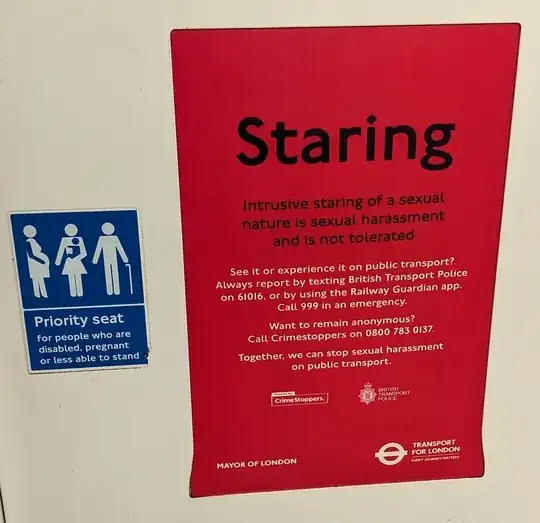england-and-wales
The poster referred to by the question is part of a campaign intended to help deter, detect and punish such wrongdoing.
There is no specific offence of "intrusive staring" or "staring of a sexual nature".
It's likely an offender would be charged with causing harassment, alarm or distress under section 4A or section 5 of the Public Order Act 1986 (if the offender were charged at all). They are both summary only offences, so they will be heard by a magistrate.
Neither s4A nor s5 require proof of sexual intent or harassment etc, so it's unnecessary to prove that.
The section 4A offence requires proof of intent, so in principle it's more difficult to prove than section 5 and it's the more serious offence of the two.
Intent can be inferred from the circumstances. The finder of fact (in this case a magistrate) must make an assessment of the defendant's state of mind at the time given all the evidence. The prosecution must persuade the finder of fact to be sure that the defendant had the offending state of mind; for s4A this is the intent to cause harassment, alarm or distress.
Perhaps confusingly, intent is not the same as purpose. You might not have the purpose of causing harassment, alarm or distress but if you act in such a way as to cause that or it was a virtual certainty of your conduct then it can be found that you had that intent (Crown Court Compendium June 2023 edition, part 1, 8-1).
Some articles about the-then new poster campaign mentioned that a man had recently been sentenced to 22 weeks in prison for the s4A offence. He had sat next to a woman on a train, stared at her for an uncomfortably long time and ignored her several requests to stop staring at her (BBC, LBC.
